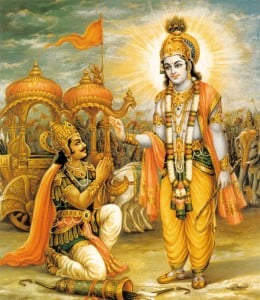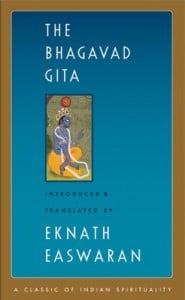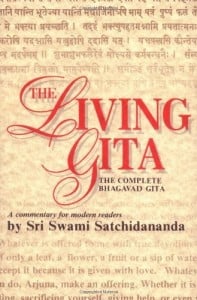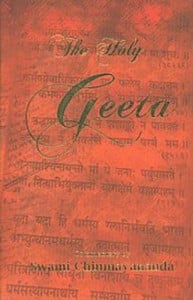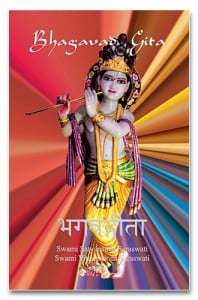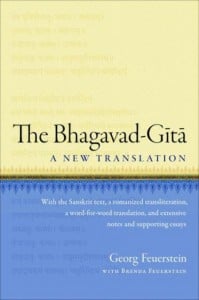Transcript
0:02
[Music]
0:11
[Music] thank you
0:17
[Music]
0:25
so let's get started talking about the 330 million gods of Hinduism
0:31
number one it warms my heart thank you
0:39
Hinduism is the world's oldest religion according to many scholars with roots and Customs dating back more than 4 000
0:47
years and many accounts Hinduism is even older than the Greek myths the Roman myths and
0:55
Judaism itself so what you're going to see when I tell some of these stories today are the
1:01
comparisons to your faiths as well roughly 95 percent of the Hindus in the
1:07
world live in India because Hinduism has no specific founder it's difficult to
1:13
trace its Origins and its history Hinduism is unique in that it's not a
1:19
single religion but a compilation of many traditions and philosophies
1:25
so how did Hinduism begin Hinduism developed from the from the religion
1:32
that the Aryans brought to India with them at about 1500 BCE so about 3 500
1:37
years ago its beliefs and practices are based on The Vedas a collection of hymns that
1:43
refer to actual historical events that Aryan Scholars completed by about 800
1:49
BCE Hinduism encourages living a good life with the hope of being rewarded in this
1:57
life and the next what I hope that you gather from today is a new understanding
2:02
of karma that Karma isn't something that necessarily happens in the next life
2:08
Karma happens immediately and it's quickly as your next breath
2:15
Hinduism is the world's third largest religion after Christianity and Islam its followers known as Hindus number
2:23
1.15 billion or about 15 to 16 percent of the total world population Hindus can
2:29
be found all over the world most big populations are in India Nepal and Mauritius but you can find Hindus all
2:35
over the world the actual term Hindu is a Persian term that comes to recognize people who lived
2:42
beyond the river Indus Hinduism includes a diversity of ideas of spirituality and traditions and is
2:50
fundamentally different from other world religions there is no ecclesiastical order there's
2:57
no Pope there's no leader at the top there's no unquestionable religious
3:02
authorities so there isn't any one person who can say that this is the truth or that this isn't the truth
3:09
there's no governing body there's no prophets and there's no binding holy book
3:15
so as we would call this in the religious terms this is the religious Wild Wild West
3:21
basic Hindu Concepts Hinduism Embraces Many religious ideas
3:27
but it's mostly and generally referred to as a way of life
3:32
less a religion many forms of of Hinduism are henotheistic meaning that they believe
3:39
in one God as supreme or they believe in one God above all other gods and this is
3:46
important to recognize when we consider uh how Hinduism uh in its heenotheism
3:51
impacted other world faiths Hindus believe in the diraq and the doctrines of samsara the Cycles The Continuous
3:58
cycles of Life Death and reincarnation and Karma the universal law of cause and
4:06
effect one of the key thoughts of Hinduism is Atman the belief in a soul a personal
4:13
soul this philosophy holds that all living creatures have an Atman or a soul
4:20
which is part of the Supreme Universal Soul brahmana
4:25
so each one of us is an Atman and we belong to the Universal Soul of
4:33
Brahman the goal is to achieve Moksha
4:38
or salvation which ends the cycle of birth death and rebirth
4:47
the fundament one of the fundamental principles of the religion is the idea that people's actions and
4:53
thoughts directly impact their life now and their next life
4:59
Hindus strive to achieve Dharma which is a code of living that emphasizes Good
5:04
Conduct and morality Hindus Revere all living creatures and consider the cow a sacred animal
5:11
all of us in the world should be thankful that Hindus do not eat beef
5:17
imagine the condition of our uh of our climate today if even 1.15 billion more
5:26
people were eating beef food is an important part of life for Hindus most don't eat beef or pork and
5:33
many are vegetarians did you know that the swastika is actually a symbol of
5:39
Hinduism and many other ancient faiths the swastika which comes from the base
5:45
suasti means well-being or good it later became associated with evil which is
5:50
what we remember today under the Nazi party but here are some samples of swastikas from around the world that
5:56
came and originated with Hinduism
6:02
if you remember nothing more about today's talk I hope that you will
6:08
remember this and I'm going to read it because I don't want to make a mistake Hinduism is a way of life
6:15
according to the Supreme Court of India unlike other religions in the world the Hindu religion does not claim any one
6:21
Prophet it does not worship any one God it does not believe in any one philosophic concept it does not follow
6:28
any one set of religious rights or performances in fact it does not satisfy
6:34
the traditional features of a religion or Creed it is a way of life and nothing
6:39
more from a western standpoint we see it as a religion in India the term Dharma or way
6:46
of life is broader than the Western term of religion for us we think of religion somehow as
6:53
something that we do and something that we believe in for Hindus this is the way that they
7:01
live their belief impacts every moment from waking till sleeping
7:08
in their way of life in fact so broad is the range of theists
7:14
that belong to the Hindu faith that Hindus can be polytheistic belief in many gods pantheistic which is
7:21
a belief that God is imminent in all things he no theistic the worship of one
7:26
God while recognizing other gods monotheistic the belief in one and only God and monistic the belief that all
7:34
things come from a source that is distinct from us Transcendent from us agnostic the belief that God is
7:42
unknowable and the doubt in God atheistic disbelief in God you can be an atheist and be a Hindu you can be a
7:49
non-theist not really caring about whether or not there is a God or not and then a
7:55
humanist which is where many fall believe that the potential value and goodness of human beings should be our
8:02
sole concern humanists emphasize common human needs and seek rational ways of solving human
8:08
problems Hinduism has been called the oldest religion in the world and is often
8:14
referred to as the sanatana Dharma the Eternal Wayne meaning that its faith is beyond history we'll see these claims
8:21
reverberated through many religions that this truth is older than time itself
8:27
Scholars regard Hinduism as a synthesis of various Indian cultures and traditions with diverse roots and no
8:33
founder this Hindu synthesis started to develop in modern day India and Pakistan
8:38
around 500 BCE so 500 years before Christ
8:43
the Hindu Faith was well developed although Hinduism contains a broad range
8:49
of philosophies it is linked by shared Concepts rituals cosmology shared
8:54
scriptures and sacred texts major scriptures include the upanishads the bhagavad-gita The Vedas and the
9:01
agamas sources of authority and eternal truths play an important role but there's also
9:07
a strong role of Hindu tradition and this tradition questions the
9:13
authority of these tasks questions whether or not the people who are saying these things are right and it allows
9:20
them to continue to develop truth as an ongoing part of their tradition
9:25
it's an admirable part of this faith the doctrine of Atman Brahman is an
9:30
interesting one most Hindus believe in Brahman in uncreated Eternal infinite Transcendent and
9:37
all-embracing principle Brahman contains itself in itself both
9:42
being and non-being and it is the sole reality the ultimate
9:48
cause the foundation source and goal of all existence
9:54
and we with our Atman are a part of that
9:59
each one of us in Hindu belief has an Atman a piece of Brahman the Eternal Soul
10:08
as the all Brahman either causes the universe and all beings to emanate from itself
10:15
transforms itself into the universe or assumes the appearance of the universe
10:24
you can't expect to understand this in this lecture this is a lifetime of
10:30
learning Brahman is in all things and is the self the Atman of all living beings
10:37
Brahman is the creator the preserver or Transformer and the reabsorber of everything it is the
10:45
beginning the middle and the end it is all things
10:51
karma is the universal law that drives Hindu principles by which good or bad
10:57
actions determine the future modes of an individual's existence Indian theories
11:04
of salvation believe that births future births and life situations will
11:10
result from your actions in this life but make no mistake karma is not
11:16
something that just happens in the next life it's something that happens now your actions accumulate and they impact
11:22
you in this life and in the next the common goal for all Hindus is Moksha
11:29
release from the cycle of birth and death and rebirth
11:34
Karma thus serves two main functions within Indian moral philosophy number one it provides motivation to live a
11:42
moral life and number two more importantly and so different from all of the other faiths
11:48
it explains the existence of evil I'm going to chat briefly about that
11:55
because I think it Bears discussion
12:00
Judaism and Christianity and Islam the abrahamic faiths believe
12:06
that original sin happened
12:12
in the Garden of Eden that at that moment when eve took a bite
12:17
that she revealed and that original sin this was the stain of humankind the stain of mankind we would look back to
12:24
the Greek myths we see that again
12:29
Pandora opened the box and released all of the evils on the world
12:35
here there is a source of evil and you lead look no further than the
12:42
mirror to find it the source of all evil is you it's me it's us
12:50
we are the reason that bad things happen in the world there's no God that is causing these things and Judaism
12:57
Christianity and Islam there's a God that punishes or rewards us for our actions however in the classical
13:03
traditions of India Hinduism Buddhism and jaundism they believe that no Divine
13:08
or external agent intervenes in the relationship of the Moral Moral act to an its inevitable result I love this
13:15
graphic whatever you do comes right back to hit you again whether it's good or
13:21
bad and this is the foundational principle of karma whatever you do comes
13:26
back to you and it's not so much that comes back to you in the next life we carry it with us
13:31
because we know intrinsically when we've done right or wrong we know and we carry
13:37
it with us and there's a wonderful quote from uh from Buddhism which is you will
13:43
not be punished by your anger you will not be part I'm sorry you will
13:48
not be punished for your anger you will be punished by your anger and in the same way you will not be rewarded for
13:56
your goodness and your kindness you will be rewarded by your goodness and your
14:01
kindness the law of karma represents a non-theistic explanation of why there is
14:07
evil in the world samsara is a wonderful concept to understand this is reincarnation
14:12
transmigration in Hinduism samsada is a journey of the soul the body dies but
14:19
not the soul which is the Eternal reality indestructible and blissful
14:24
everything is connected cyclical and composed of two things the soul and
14:29
matter the Eternal Soul called Atman your Eternal Soul called Atman never
14:36
reincarnates it is the same from body to body from life to life it cannot change
14:43
in contrast the body and the personality does change and it's constantly changing being born dying and being reborn again
14:50
Karma impacts your future circumstances in this life as well as the future in your
14:57
next life good intentions and actions lead to a good future bad intentions and
15:03
bad actions lead to a bad future we tell our children the same thing
15:08
right the range of samsara stretches from insects all the way to the god Brahma
15:14
the range of rank birth in the hierarchy of life depends on
15:19
one's actions so how you live in this life determines how you will live in the
15:24
next life the aim of spiritual Pursuits is self-liberation Moksha from samsara
15:32
there are four objectives to life artha prosperity Hindus believe that you
15:38
should be prosperous and you should enjoy your prosperity this is a good thing you should have a
15:45
purpose in life you should enjoy your life you should be successful and this material satisfaction allows us
15:51
to pursue the other purusatha the other four goals arth is kept in check by Dharma which is
15:58
a moral obligation of righteousness so if you have a lot of good things that's wonderful
16:04
but keep it in check never have too much and make sure that you understand your obligation that with every Right comes a
16:11
responsibility and with Good Fortune comes responsibility to manage that fortune
16:18
since abundance and prosperity are qualities of the Divine seeking and possessing such qualities is in
16:24
accordance with the design with this design however artha is a stepping stone
16:31
it is not the Cornerstone it's meant to help you it's not meant to be the goal
16:36
finding contentment in the necessities of life such as shelter food and knowledge allows one to pursue the other
16:43
three purusatas however when you have too much it can cause an imbalance as
16:48
imbalance can happen in all things comma not to be confused with Karma
16:55
means desire or pleasure most of us are familiar with this although we'll say that we're not familiar with it in the
17:00
Kama Sutra right the comma offers enjoyment and love for life this is again essential to being
17:07
part of the Divine Kama contributes to a balanced life but
17:12
should not become an obsession if calm is not fulfilled with mindfulness or is
17:18
suppressed this stops us from becoming whole so we shouldn't obsess about it but we also
17:25
shouldn't deny ourselves because when we deny we want it even more and so one must give and receive comma in
17:32
accordance with Dharma and also create and appreciate comma to pursue maksha to
17:38
find this balance to continue to live and to in to leave this cycle comma and balance
17:44
and I say this for all of you here find this balance even while on board the cruise ship sometimes I see people who
17:50
are having their dessertness oh I shouldn't have this dessert have the dessert
17:55
don't have five of them but have a dessert and enjoy it be fully
18:01
in the moment of appreciating that dessert but then when that dessert is gone
18:06
recognize that you might have to walk a little bit too right there's this balance compassion find compassion find joy and
18:13
a humble gesture find enjoyment through a massage or through
18:19
the act of sex with your partner the aesthetic appreciate the beauty of all that surrounds us when we're looking out
18:25
from this beautiful ship and seeing the ocean and the beautiful sights that we're seeing appreciate all of that recognize it for what it is that it's
18:32
beautiful however to over indulge in these things gives us an unstable comma greed
18:39
addiction sloth Hedonism any of these things that come at the cost of another
18:46
puts us and puts our lives and our futures an imbalance
18:51
there is a moral obligation this is one of the other purus Dharma Dharma refers
18:56
not only to Social and moral ethics but to what is Right steadfast virtuous and true
19:02
Dharma is the way of living properly it's involved Duty it involves moral
19:09
actions and service to others and involves sacrifice following Dharma is different for each
19:14
person each of us has called according to our gifts to express our Dharma and to reveal
19:22
our life goals in very different ways living out once Dharma means to act in
19:28
accordance with the law to come into one's Supreme self what does that mean
19:33
it means that I can't judge Myself by your goals and by your life nor should
19:39
you mine that were each responsible for our own lives were each responsible for
19:44
recognizing our gifts first and foremost what is our gift we all have them some
19:50
of us spend our lives denying them and what this tells us is that we need
19:55
to accept our gifts and to recognize the responsibility that comes from that gift to have a gift and to not recognize
20:02
one's responsibility is to not fully Embrace one's Supreme self
20:08
and therein is the imbalance Dharma is the natural law that upholds the world and keeps the universe in
20:15
balance it's important to recognize that accepting an event
20:21
and feeling it fully is important when you lose someone in your life
20:27
feel it fully allow yourself to grieve into loss when you have something good in your
20:33
life allow yourself to feel it fully feel Fully Alive and accepted but recognize
20:40
all of this is fleeting it's here now be grateful for it appreciate it and Let It Go
20:47
because it's when we hold on to these things that we cause imbalance in our own lives
20:55
holding tightly too tightly to one's vision of how things should be this is what my life is supposed to be
21:02
we do this with ourselves and we also do it with our children we want our children to live certain
21:08
ways and we want them to live ways that we think we don't know what their path is we
21:14
don't know what their life is or their true gifts are only they can know that and only they can find their path we
21:19
have to let go again coming back to this idea that's rooted also in Islam surrender to one's life but surrendering
21:26
also to the recognition of your gifts and understanding that what we think is fixed and reality is neither fixed nor a
21:33
reality Moksha again is the ultimate goal for believers this release from the cycle of
21:40
death and birth this comes before Nirvana moksha's this point in time where you have achieved all that you
21:46
possibly can achieve and then the next step is nirvana Moksha is a place of self-acceptance and
21:54
Oneness with the universe to reveal the Supreme self it offers a place of freedom and release
21:59
from the karmic cycle Life In Balance again attain wealth but don't let wealth corrupt or distract you
22:07
indulge and enjoy life's Pleasures but don't become obsessed by them be moral and righteous but don't become fixed and
22:13
rigid now we get to talk about the 330 million
22:21
gods and goddesses of Hinduism according to the Epic Mahabharata there are 33
22:28
333 Hindu deities other sources multiply this a thousand fold and this was my
22:36
mistake the first time I only multiplied it a thousand times you have to multiply
22:42
it a thousand by a thousand and that's what reaches 330 million Gods however
22:49
the gods are actually referred to as the 33. so here's where the whole mix-up
22:56
happened and I'll tell you what a whole world full of Hindus still don't understand this which makes it really
23:01
difficult for the rest of us to understand it but when Hindus discuss the type of gods the phrase 33 quote ish
23:08
is used in a spiritual religious context means 33 types of gods however in
23:15
mathematics the word koti also means million so someone along the way got
23:22
confused with the types and used the other meaning for the word million and said ah there must be 330 million this
23:31
dual meaning has created a lot of problems over the years for Hindus creating even more uh misunderstanding
23:37
and confusion and created the understanding of the 330 million Gods today to clarify 33 Cody is not 33
23:45
million or 330 million but merely 33 types of Gods
23:52
what are the 33 types of gods 11 rudras 12 adityas eight vasas and tuasvinis
23:58
that means nothing to you but what I'm going to show you here is what that really means eight vastness
24:04
these are the elements of material so we have Sky Earth Wind Fire Stars sounds like a 70s rock band
24:11
and then you have the 12 aditias this list sometimes varies but here the the personified deities not the elements of
24:17
nature and then the 11 rudras and these are really interesting these are the abstractions Bliss knowledge thought
24:24
breath or life revealing Grace concealing Grace self these are the other gods and then the
24:31
two Ash beanies these are known as the Divine doctor so this are the 33 different types of Gods
24:39
this is a quote from a sarcastic Hindu friend and it's a favorite of mine there are approximately a 1.15 billion Hindus
24:46
on the planet at any given time an average of about three of us may agree on a particular conception or
24:52
understanding of God the idea that Hinduism has 330 million Gods isn't hard
24:58
for me to believe at all I would actually think there would be more Hindus generally see God in everything
25:04
and everything in God some Hindus are strict conformists to
25:10
the sacred texts but some conceive of their gods with greater freedom and allow themselves to explore this
25:17
beautiful faith without restrictions and to see their God as it makes sense to them in this faith Gods can be male and
25:24
female animal anthropomorphic having qualities of a man or qualities of
25:30
animals even an element of nature nothing is known all is Mystery
25:38
so the question are there three 33
25:45
33 million or 330 million gods
25:50
I would say that the answers are relevant the inherent truth is that a belief in Gods no matter the
25:56
number is an Act of Faith in an entity or being that's eminent in all things and yet
26:03
transcends our understanding and this is in fact the definition of faith isn't it
26:09
to believe in what we can't see or can't understand or know doesn't take any Act of Faith to believe
26:15
in what you can see that's what science is for this is Faith it's something different altogether
26:21
Hindus acknowledge that the most fundamental level God is one without a
26:26
second here again we see this principle and we'll see it now of a triadic godhead but a Unity there is one God
26:34
without a second the absolute formless and only reality known as the brahmana
26:39
the Supreme and Universal Soul Brahman is the universe and everything in it
26:45
whatever you can touch whatever you can see whatever you can feel is Brahman if you can imagine it it's
26:52
brahmana all things are brahmana and brahmana is in all things Brahman has no form and no
26:59
limits Brahman is reality Brahman is truth
27:06
Hinduism is a pantheistic religion meaning that it equates God with the
27:11
universe God is in all things God is imminent if you can see it it is a God
27:16
but yet Hinduism is also polytheistic it gives expression so there's one God but
27:22
many faces Brahma the Creator now we're going to
27:28
talk about the Triune godhead this is one of the first trinities first expressions of a Triune godhead and this
27:34
is Brahma the Creator he's the first member of the Hindu Trinity Vishnu the preserver is the second
27:40
member of the trinity she also or vishna also is worshiped in many forms such as Rana and Krishna some
27:47
somewhat mysterious God Vishnu is the Divine Essence that pervades the universe
27:53
and then you have Shiva the destroyer and this is where it gets interesting so you have Brahma the Creator
28:00
vision of the preserver and now Shiva the Destroyer but Sheba destroys for one
28:06
purpose because in order to build and to bring new again what was old must first be destroyed
28:14
and in this we see the first inklings of the concept of Resurrection
28:21
the idea that what needs to be reborn again must first die
28:27
and this happens through Sheba the Destroyer Ganesha is one of my favorite
28:33
Gods I have a statue of Ganesha in my office and
28:38
when you go to India please pay close attention to your taxi drivers they will
28:44
have a statue of Ganesha often on their dashboard or hanging from their rearview mirror because they're praying that with
28:51
Indian traffic in some of the major cities that this is going to remove the obstacles in front of them it's a
28:56
wonderful religious bit of Comedy then if you see it you're part of the inside joke now
29:02
Saraswati the goddess of learning for those of you ladies who came to one of our question and answer sessions and
29:08
we're asking about goddesses and the power of women in faith here we see
29:15
evidence of female goddesses and their power in this faithi the goddess of learning a
29:22
really powerful goddess is the consort of Brahma the Creator so brahma's the
29:28
Creator and who does he choose he chooses the goddess of learning she's
29:33
worshiped as the goddess of learning wisdom speech and music and this is also before Athena the goddess of wisdom
29:40
right so she gives Saraswati gives birth now to the concept to the Greeks of Athena
29:47
Hindus offer prayer to swarasuti before beginning any intellectual Pursuit children will be saying praying to
29:53
Saraswati so here early on we see a wonderful balanced
29:59
prayer not only to the Creator God who has perceived as male but the goddess of learning who is female and children are
30:07
raised with this concept Lakshmi the goddess also of Good Fortune
30:13
wealth and love and well-being so if you want good things in your life
30:19
you will pray and spend time thinking and giving homage to Lakshmi who provides All Good Things wealth and
30:26
well-being Indra is the king of heaven and Lord of the Gods he wields a thunderbolt so again try to compare with
30:33
other religions we have Thor we have Zeus right the Thunderbolt these are the
30:39
origins of these gods that all come from Hinduism now my Greek friends will argue
30:45
with me till they are blue in the faith about this blue in the face about this and that's okay but the simple truth is
30:50
that Hinduism did predate the Greek mythologies but again we see this idea of people trying to explain the forces
30:58
of nature through God's and that's the story here that's the truth that these myths are not necessarily truth in and
31:04
of themselves they point to a deeper truth Surya is the Sun and look at Surya
31:09
as a Golden Warrior arriving on a chariot pulled by seven white horses how many of you've seen Helios or Apollos
31:16
this is the same thing that we're talking about or even in the Egyptian model you have ra being pulled through
31:22
the sky on kefri the dung beetle right and you have different different movements here but this is a same idea
31:28
of the sun being pulled across the sky by horses Agni the fire god
31:34
Hanuman The Monkey King and devoted servant he's featured in The Great epic ramayana and he earned a path to
31:40
deification by performing Feats of Strength for those of you who know the story of Heracles who later became the
31:46
Roman god Hercules this is the same story Hanuman is Heracles Heracles is
31:53
Hercules it's all the same this is a story that Constantine believed in as well and he said I associate myself with
32:01
this God Heracles because Heracles through his 12 acts Rises to become a
32:08
god and the beauty of Hanuman is that through all of us that we can through
32:13
our actions rise to the level of becoming a God that we are capable of
32:19
great things if we allow ourselves to do the work and to make the sacrifices that
32:26
we can become like a god there's dualism
32:31
in all of these faiths but it's evident in Hinduism the distinction represented by the gods
32:37
is not a distinction however between good and evil but rather a distinction between the two ways in which the Divine
32:45
manifests itself in this world so it's not about Good and Evil this is about how God manifests himself or herself in
32:53
this world both as benevolent yet fearful harmonious and disharmonious and both
33:00
Transcendent and imminent in all things
33:06
there are some wonderful key beliefs in Hinduism and it's more of a value system
33:12
to learn a common threat is a belief in the Supreme Being and adherence to Concepts such as truth Dharma and Karma
33:20
belief in the authority of The Vedas is an important element as well although people differ on their impressions of
33:26
how what The Vedas mean Hindus pursue knowledge and understanding of the truth the very essence of the universe and the
33:33
only reality of Brahman according to The Vedas truth is one
33:39
but the wise express it in a variety of ways and in the same way they look at
33:45
their God that God is one but it's manifestations and its expressions are many and hence
33:52
we see this understanding of polytheism and pantheism Brahman is truth and reality formless
34:00
Limitless all-inclusive and eternal it's not an abstract concept brahmana is all
34:05
things and in all things The Vedas are the books that are the ultimate Authority Hindus believe that The Vedas
34:13
are without beginning and Without End even when everything else in the universe is destroyed The Vedas will
34:20
remain Christian hold the same thing to be true with
34:26
Jesus Jesus is the word the logos he is the beginning and the end the Alpha and
34:31
the Omega and that when all things are gone Jesus will remain and really what we're talking about here is truth
34:37
isn't it that when all things are gone what will remain is the truth Dharma can be described as right conduct
34:44
righteousness moral law and Duty and everyone should strive to achieve Dharma
34:50
we should all make Dharma the doing the right thing Central to our lives individual souls are Immortal this is an
34:57
important lesson a Hindu believes that the individual soul the Atman is neither created nor destroyed it has been is and
35:06
will be world without and amen sound familiar
35:13
actions of the Soul ryre residing in the body require that it reap the consequences of those actions in the
35:19
next life the same soul in a different body
35:24
the process of movement of the Atman from one body to another is known as
35:30
transmigration so when you die your soul remains and then continues on
35:36
to another body to continue its Journey the kind of body that the soul inhabits
35:42
is determined by Karma actions accumulated in a previous life
35:47
so if you don't like your body folks you just have to ask yourself what you
35:52
did in the last life to deserve it Moksha is Liberation the Soul's release
35:59
from the cycle of death and rebirth but several paths can lead to this
36:04
realization here's the beauty there isn't Just One path for any of us
36:10
the path of Duty is One path The Path of Knowledge is another and the path of
36:15
devotion is yet another and here again we see this connection to Islam
36:21
unconditional surrender to God submission to the will of Allah
36:28
we'll talk we can't really talk about Hinduism without talking about the caste system and I want to spend a little bit
36:34
of time thinking about this how does the caste system work the main cats were further divided into
36:40
3 000 castes and then 25 000 subcasts so what they did with their gods they also
36:46
did with the caste system most societies have some sort of social class based on education culture and
36:52
income levels however in Ancient India this was inspired by the Hindu scriptures and people assumed these
37:00
vital roles based on their abilities at 3 000 years old India's caste system
37:05
is among the oldest forms of surviving social stratification today
37:10
while the caste system is seriously flawed its concept was based on this division
37:16
there are three or four different elements the Brahman the Priestly intellectual class this is the top class
37:22
their duties include serving as the gatekeeper of knowledge so again we see someone who has to receive the message from the gods provide intellectual
37:29
advice to the governing bodies who's going to help the government understand the meanings of the scriptures offer Priestly services and religious
37:36
leadership and grapple with fundamental questions of life so everything was being done with them so that they could
37:41
think about the most important things modern moderate examples of this would be philosophers religious leaders and
37:47
teachers then we have the chatriyas the warrior class these would be today the police officers government officials
37:54
these are people who defend the country from internal from external aggression or internal strife and they specialize
38:00
in arms and ammunition and tactics of warfare the visayas the trade and commerce class
38:06
is also important these are the people who keep the wheels of the economy moving the visayas specialize in trade
38:12
and commerce and they're primarily Traders and entrepreneurs this would be Artists Craftsmen
38:19
Merchants entrepreneurs any business owner today and then you have the sudras the labor class these would be anyone involved in
38:25
labor in the field anyone who is a woodworker or Carpenter this sort of cast is just above the lowest class but
38:32
it's an important level because this is where the real work gets done Farm laborers construction workers this is
38:38
the real meat and potatoes of the economy and then we have the lowest class The Untouchables the
38:45
ashutalis Untouchables perform the most menial
38:50
labor such as sweeping streets cleaning sewers and Tanning leather the creation of this group was a perversion
38:59
that was set forth and misinterpreted in he in Hindu scripture this perversion was challenged by the
39:06
modern Indian leaders such as Mahatma Gandhi and in many respects is still at play even today so how does
39:14
the cast work for centuries cast dictated almost every aspect of Hindu religious and social life with each
39:21
group occupying a place in their hierarchy rural communities were were arranged on the basis of castes the
39:27
upper and lower caste lived in segregated colonies the water wells were not shared does this remind you of
39:33
anything that happened in the United States in the 1960s right these same things happen over and
39:39
over again and we have to question why does it happen and I'll discuss this towards the end
39:46
brahman's would not accept food or drink from the shudras one could not could only marry with whom once cast
39:52
and the system bestowed many privileges on the upper class while keeping the lowest classes
39:57
doing without even the basics most times is the caste system legal in 1950 it was
40:04
said that it was no longer legal and they needed to start hiring from the lowest economic classes in society
40:10
however in 1989 they were still having problems and they still have problems today they even talked about other
40:17
backwards classes obcs which fall between the traditional upper castes and the lowest so anything that's not the
40:22
highest and the lowest called other backwards casts and they're still trying to help bring these people into greater
40:29
levels of economic prosperity and recent decades with the spread of secular education and growing urbanization
40:37
the caste system is somewhat declined but you will see it in full effect when you travel throughout India you can't
40:43
but see it despite the changes cast identities remain strong and you'll see it even in
40:49
people's names so even though they have eliminated it people's names still reflect their cast
40:56
the caste system continues to be justified by the concept of samsara and reincarnation here we see
41:02
where religion itself contributes to the degradation of certain people at
41:08
the lowest ends the consequences obviously with Karma have to do with your current life right
41:14
so if you are at the bottom portion of society if you have nothing if you're being treated like a slave it's because
41:21
you must have done something in past lives to deserve this you are exactly where you are supposed to be and of
41:28
course those at the top continue to perpetuate this because it keeps them in power and allows the people at the
41:34
lowest and to continue to receive nothing while the people at the top receive most everything
41:42
there are some wonderful lessons from the bhagavad-gita which is one of the Hindu scriptures and I'll go over these
41:47
briefly but I hope that you will take some time to read from the bhagavad-gita
41:53
set thy heart upon thy work but never on its reward do what you love
41:59
and the reward will follow but don't do it for the reward do it because you love it and the reward will follow
42:05
dream big we're kept from our goal not by obstacles but by a clear path to a
42:10
lesser goal this is one of my favorites there's not obstacles that are stopping you it's just something easier that's
42:16
right in front of it that you choose to do instead why didn't I do this well I chose to do
42:22
something else he didn't choose to do nothing you chose to do something of lesser value that was easier to do we
42:28
have to choose the hard thing my wife told me today she heard a quote that said if your dream doesn't scare you
42:33
you're not dreaming big enough and that's the truth we should be dreaming big we should be setting our
42:39
hearts on great things and then working towards those not letting us being held up by smaller dreams
42:46
let go of attachment you came here empty-handed and you will leave empty-handed whatever you receive now
42:52
hold on to it for a little bit whether it's heart break
42:58
Joy sadness love hold on to it for a little bit
43:04
and then let it go because it's not meant to be yours to keep
43:09
this is a personal favorite of mine be careful when you follow the masses sometimes the m is silent
43:15
and I have to share with you this isn't from the bhagavad-gita but I had to share it anyways everything happens for a reason whatever
43:23
happened was good whatever is happening is good whatever
43:28
will happen will also be good what has happens happened it's all in how you choose to see it
43:35
there's nothing more to be done the future is a picture it's an illusion the future will never come because when the
43:41
future arrives it's no longer the future it's the present and it's called the present because it's a gift
43:47
it's ours to take into use and so you don't control the future you barely
43:53
control the present but we do control how we respond to it so live to the fullest We Are All One
43:59
this is a wonderful lesson the man who sees in me everything and everything within me will not be lost to me nor
44:06
will I ever be lost to him he was rooted in Oneness realizes that I am in every being wherever he goes he
44:13
remains in me when he sees all being as equal and suffering or enjoy because they are like
44:21
himself that man has grown perfect in yoga we are happiest and at our best when we
44:27
see the inherent goodness in all things everyone wants to be treated nicely kindly so do unto others as you
44:36
would do to yourself give without expecting something in return this is tough a gift is pure when
44:42
it's given from the heart to the right person at the right time and at the right place and when we expect nothing in return
44:50
because if we give expecting something in return it's not really a gift is it you are what you think you are we behold
44:57
what we are and we are what we behold whatever you think of yourself you're
45:03
right at any given moment whatever you believe about yourself is right
45:09
and so it's up to us to think better of ourselves and about others closing thought today
45:15
is what we believe determines how we Act if we believe that we are all equal
45:21
we strive for equality don't we if we believe that we are better than others we subjugate others or we accept the
45:28
status quo for our advantage this is a hard one to swallow but our
45:34
world today accurately reflects what we believe For Better or For Worse
45:40
be of good intention your words and your actions will follow
45:46
and more importantly be the change that you want to see in the world and in this I close thank you very much
46:12
thank you [Music]


 Audible sample
Audible sample Audiobook
Audiobook Audible Audiobook – Unabridged
Audible Audiobook – Unabridged



 1
1